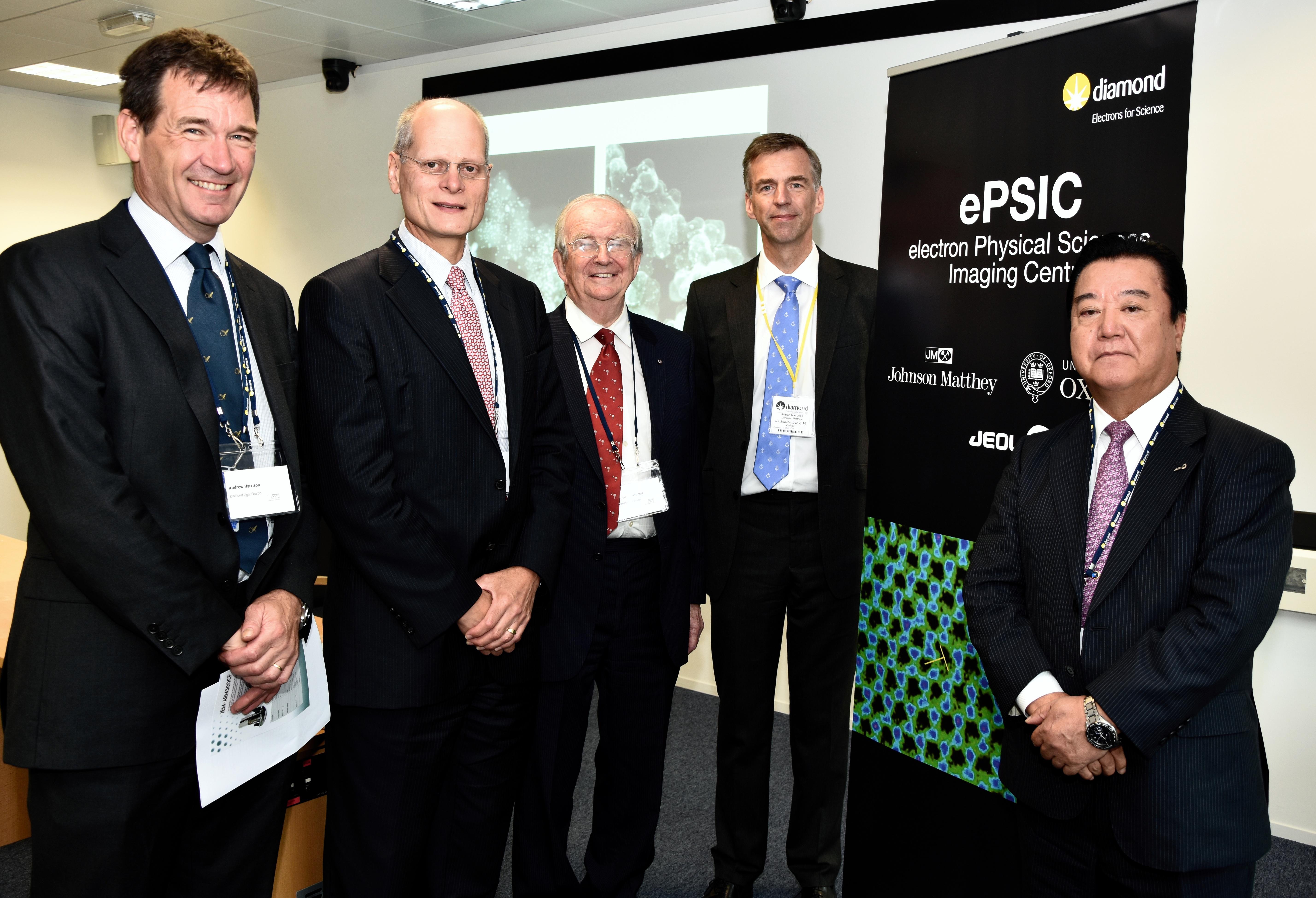A pioneering new centre for the study of nanoscale materials involving University of Oxford researchers has opened near the city, giving a boost to the UK's world-leading science and technology infrastructure.
Oxfordshire's cutting-edge electron Physical Science Imaging Centre (ePSIC), located at Diamond Light Source on Harwell Campus, is the result of collaboration between a research facility, academia and industry. Diamond, the UK's synchrotron, has partnered with the University of Oxford and the global speciality chemicals company Johnson Matthey to bring a unique set of tools to the centre. Funding for the construction of the new building included contributions from the Wellcome Trust, the Biotechnology and Biological Sciences Research Council, and a £2m contribution from the Science and Technology Facilities Council.
The centre contains two state-of-the-art electron microscopes for the physical sciences, designed to provide scientists with atomic-level images in a range of technologically important materials.
The Vice-Chancellor of the University of Oxford, Professor Louise Richardson, said: 'ePSIC is a powerful expression of what we can achieve when universities, research facilities and industry work in close partnership. Hosting these path-breaking technologies here in Oxfordshire will assist scientists with their pioneering research, helping them translate their ideas into breakthroughs which benefit us all.'
Angus Kirkland, Professor of Materials at the University of Oxford and Science Director at ePSIC, said: 'This centre will provide a world class capability for materials imaging, and the collaboration with Johnson Matthey will bring technologically important problems into focus and answer fundamental research questions.'
ePSIC's two electron microscopes will provide top-of-the-line resolution down to 0.5 Angstroms for research groups looking to determine the atomic structure and characteristics of materials. Advanced tools such as this are expensive, so it is important that they become accessible in a centralised way, thereby providing tangible benefits to the wider science community. Academic scientists from around the world will be able to access the centre's tools following peer review. This will ensure that ePSIC is attracting the best science and supporting some of the most promising research projects in the field.
This information can be used to develop enhanced 'smart' materials for use in consumer technology, next-generation transportation, and engineering. The advanced tools can not only give a way to visualise at atomic-resolution scales, but could also help address some of the great technology and engineering challenges of our time.
Robert MacLeod, Chief Executive of Johnson Matthey, said: 'We are excited to be part of this unique collaboration for UK science. R&D is at the heart of our future success, and this new electron microscope will enable Johnson Matthey's scientists to actually "see" and analyse individual atoms in real-time within the structure of our materials. This unrivalled capability in physical sciences is crucial for us in driving innovation in new and existing products for our customers.'
Professor Andrew Harrison, CEO at Diamond, said: 'Diamond is a world-leading centre for visualising physical and biological materials at the atomic and molecular level, and it makes sense to complement our capabilities with electron microscopy. Information gained will give us microscopic properties and valuable insight into the electronic structure of materials, strength, and much more. The centre will be open to all and will operate like our beamlines, through both academic peer review and proprietary access. As a result, the Diamond synchrotron will become the first in the world to house such a complementary set of techniques.'
Accompanying the two microscopes for the physical sciences, the facility will also contain microscopes to support research in the life sciences. Known as eBIC (the electron Bio-Imaging Centre), this complementary centre will provide similar tools to ePSIC for cryo-electron microscopy research into biological matter, such as viruses and bacteria.
The microscopes will be housed alongside Diamond's I14 hard X-ray nanoprobe beamline, which uses X-rays to probe similar materials. The close proximity of the three separate research endeavours – ePSIC, eBIC and I14 – will promote a holistic, interdisciplinary approach to nanoscale research, promoting synergies and opportunities for collaboration between the different disciplines across academic and industrial users.
Professor Angus Kirkland added: 'The combination of electron microscopes for both the life and physical sciences, together with the I14 hard X-ray nanoprobe beamline, will provide a unique capability, and the location at Diamond will provide the best possible environment to promote scientific interaction.'
